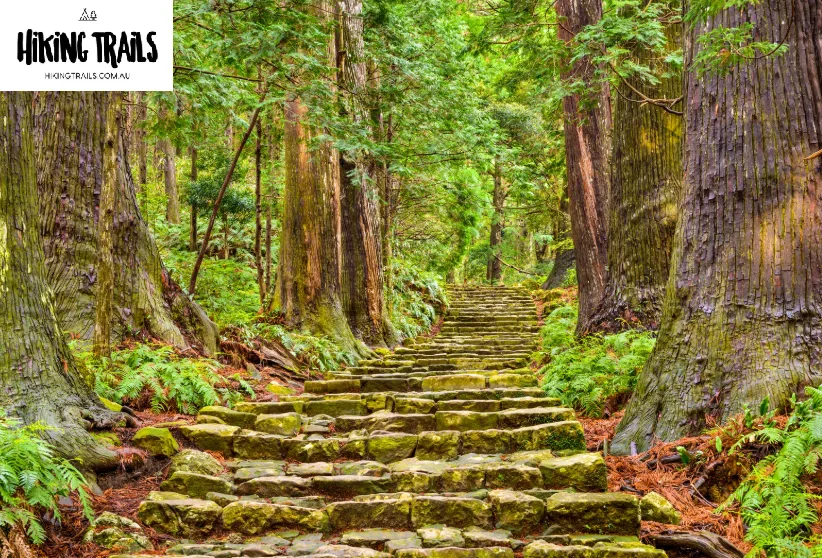Tracing Footsteps Through History: The Allure of Japan’s Mountain Trails
Introduction
There are paths that take travellers to destinations, and then there are paths that lead them inward. Japan’s ancient mountain trails belong to the latter. They weave through forests, rise over misty ridges, and cross rivers that have witnessed centuries of prayer, poetry, and perseverance. These are not mere hiking routes; they are living testaments to humanity’s search for meaning in the natural world. Today, walkers from around the world are drawn to these trails not only for their beauty but for the promise of quiet reflection and cultural immersion. The Kumano Kodo Trail is one such journey, inviting hikers to step into the footsteps of emperors and monks who once sought enlightenment among cedar and stone. To walk these routes is to trace history with one’s own heartbeat, finding in each turn a lesson about stillness, gratitude, and endurance.
The Mountain as Mentor
Mountains have always been seen as spiritual teachers in Japan. They rise as reminders of strength, patience, and impermanence. In the Shinto belief system, mountains are sacred homes of kami, the deities that guard and guide. For centuries, pilgrims have walked uphill not simply to reach a shrine, but to engage in conversation with nature itself. The climb tests the body, the silence teaches humility, and the vastness fosters awe.
On routes like the Kumano Kodo Trail, every ascent mirrors the internal struggles of the traveller. The steep paths demand focus, breathing, and rhythm, creating a physical meditation that connects the hiker to something timeless. Unlike urban life, where speed defines success, the mountain rewards attentiveness. Each stone and turn becomes a companion in reflection.
In this way, the landscape serves as both a challenge and a companion, shaping the experience of walking into something far deeper than a simple journey from one point to another.
The Path of Pilgrims and Poets
The Kumano Kodo Trail carries stories older than memory. For over a thousand years, emperors, monks, and common people have followed these forested paths in search of spiritual clarity. Their footprints carved a narrative that blends devotion, art, and endurance. Pilgrims travelled between the three grand shrines of Kumano, seeking purification and renewal. Each shrine marked a symbolic transformation, from the world of mortals to the realm of spirits and back again.
Along the way, poets found inspiration in the rhythm of their steps. The famous Heian poets wrote verses about mist-covered valleys and the sound of rain on temple roofs. These works preserved not only the beauty of the landscape but also the essence of spiritual longing.
Today, when modern walkers follow the Kumano Kodo Trail, they move through a living anthology. The same moss-covered stones that supported ancient feet now cradle the steps of travellers seeking the same peace.
Modern Comforts on Ancient Routes
Walking an ancient path no longer means sacrificing comfort. The experience has evolved to blend heritage with accessibility. Companies like Hiking Trails Pty Ltd, an Australian-based family-owned hiking travel agency, design guided and self-guided walking packages that allow travellers to immerse themselves in the journey without the stress of logistics.
Hiking Trails offers the Kumano Kodo 7-day package, which provides walkers with accommodation, luggage transfers, and cultural guidance along the route. This careful balance between structure and freedom ensures that the essence of pilgrimage remains while the journey becomes attainable to many more people. The company’s mission is not to commercialise the path, but to help travellers engage with it respectfully, walking at their own pace while absorbing the natural rhythm of the land.
Modern travel conveniences have opened doors for global adventurers to experience sacred routes in authentic ways. They allow participants to focus on connection, with nature, culture, and themselves, rather than the complexities of planning.
The Art of Slowing Down
Walking ancient trails demands patience. The rhythm of footsteps, the soft rustle of leaves, and the hush of distant rivers all remind travellers that life need not be hurried. In a world ruled by deadlines and digital distractions, this slow movement feels almost rebellious.
On the Kumano Kodo Trail, there are moments when time seems to dissolve entirely. A hiker may pause beneath a towering cedar, listening to the breeze whisper through its branches. Such moments, though fleeting, carry deep weight. They remind us that presence is the true measure of experience.
For many, these trails become lessons in mindfulness. The body moves, but the mind settles. Breathing aligns with the pulse of the earth, and the boundary between self and surroundings softens. In walking slowly, travellers rediscover what it means to simply exist , to observe without urgency, to move without destination, to feel fully alive in the act of being.
Cultural Encounters on the Trail
Every trail is also a cultural bridge. In Japan’s mountain paths, hospitality takes the form of tea shared at small inns, greetings exchanged with fellow walkers, and gentle guidance from local hosts. Such encounters breathe life into the experience.
Travellers often stay in ryokans, traditional guesthouses where tatami mats, onsen baths, and simple meals reflect centuries-old customs. Through these exchanges, visitors learn that the spirit of pilgrimage extends beyond shrines and paths; it is also found in kindness, humility, and the willingness to share.
Hiking Trails Pty Ltd helps facilitate these connections, ensuring travellers engage meaningfully with local traditions and communities. By supporting regional inns and family-run services, these journeys become part of a larger cultural ecosystem.
Each conversation, meal, and shared smile becomes an offering of gratitude, a reminder that walking is not only a personal journey but a shared human one, shaped by generosity and understanding.
Preserving the Legacy of Ancient Walks
Ancient paths like the Kumano Kodo Trail endure only through balance between reverence and recreation, history and modernity. Preservation is not merely about maintaining stone steps or repairing signposts; it’s about nurturing the spirit of pilgrimage itself.
Local communities and environmental groups work tirelessly to protect these trails from the effects of over-tourism. Efforts include educating travellers on responsible hiking practices, encouraging waste reduction, and maintaining harmony with the natural ecosystem. The emphasis lies on walking lightly, respecting the rhythm of both landscape and culture.
Organisations involved in cultural travel, such as Hiking Trails Pty Ltd, contribute by promoting sustainable walking practices. Their packages prioritise small groups and minimal environmental impact while ensuring local traditions are honoured and supported. This model of mindful tourism ensures that the wisdom of these trails continues to inspire generations without losing its authenticity.
To preserve such routes is to protect the timeless dialogue between people and place , a conversation as old as the earth itself.
Conclusion: A Living Connection to the Past
To walk the Kumano Kodo Trail is to trace the delicate line between history and present, body and spirit. Each stone on the path carries echoes of those who came before , emperors, ascetics, wanderers, and dreamers who sought something greater than themselves. Modern travellers join this lineage not as tourists, but as participants in an ongoing story.
The experience is more than a physical challenge; it is an unfolding meditation. Every day on the trail becomes a lesson in gratitude, every pause a chance to listen , not to noise, but to silence. The steady pace of walking reminds us of an older rhythm of life, where meaning was found not in arrival, but in the act of moving forward with intention.
Hiking Trails Pty Ltd continues to honour this philosophy through carefully curated walking experiences that bridge tradition and comfort. Their work allows travellers to engage with Japan’s sacred landscapes with reverence and awareness, ensuring the pilgrimage remains as meaningful today as it was a thousand years ago.
In the end, the allure of Japan’s mountain trails lies not in their difficulty or fame, but in their quiet truth: that the journey itself is the destination. Every footstep is an offering, every breath a prayer. To walk these ancient routes is to rediscover balance , between nature and self, past and present, solitude and connection. It is a reminder that even in the modern world, the path to meaning still winds through the mountains.






